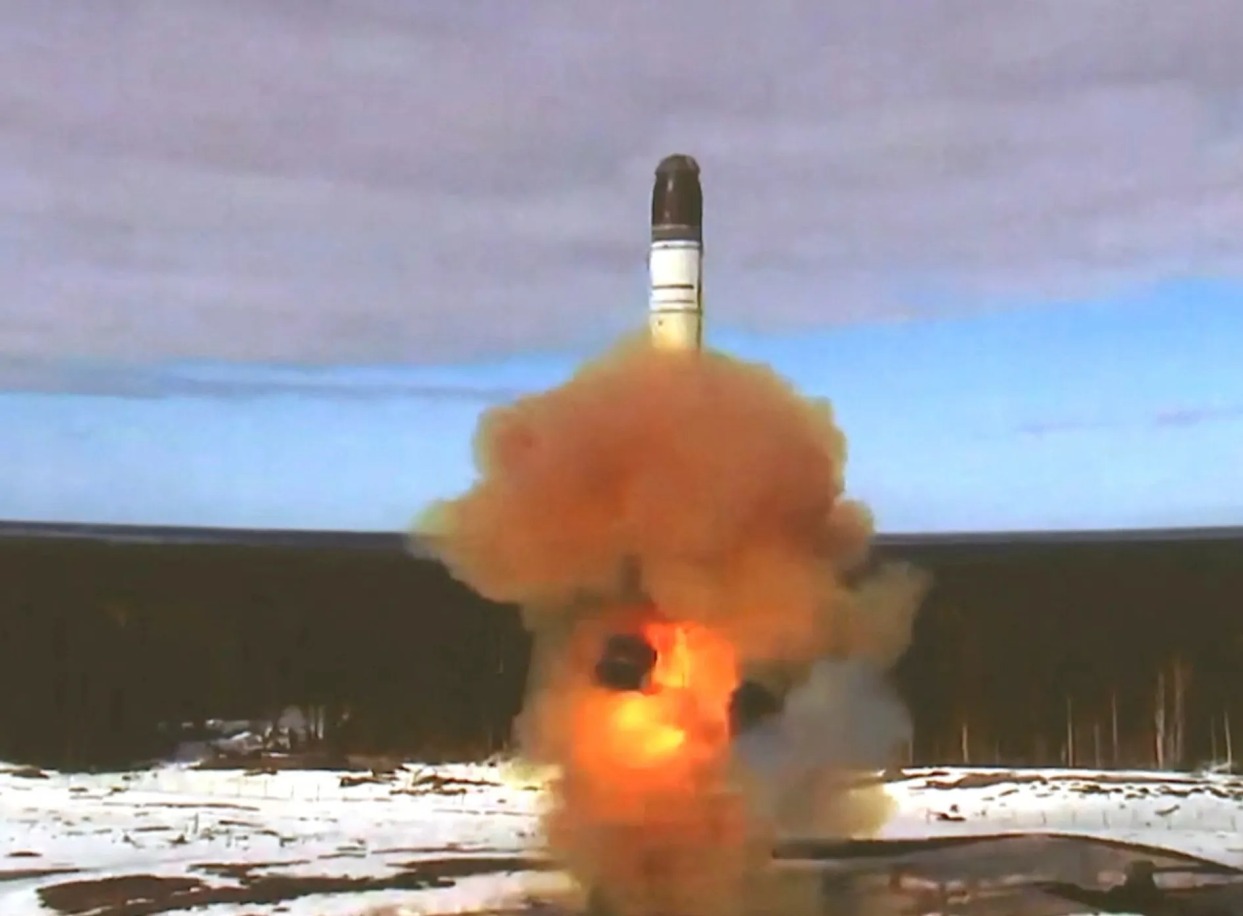Russia’s Strategic Missile Forces (RVSN) continue to make strides in modernizing its nuclear arsenal, with work advancing on the deployment of the RS-28 Sarmat intercontinental ballistic missile (ICBM) system.
In a recent article published in the Russian Defense Ministry’s Bulletin of Military Education, RVSN Commander Sergei Karakaev announced that work is ongoing to place the latest Sarmat silo-based missile system on combat duty, according to the state news agency TASS.
According to Karakaev, the fifth-generation Yars and Avangard missile systems are already operational, and the Sarmat system, featuring a liquid-propellant heavy missile, is in the final stages of being ready for combat duty.
“The work continues on putting the latest Sarmat silo-based missile system into combat duty,” Karakaev stated.
The article outlines the continued rearmament of Russia’s missile regiments, with more than 88% of the RVSN’s missile technology now composed of modern systems.
This rearmament, driven by the state’s defense program, is central to Russia’s military readiness, particularly in an era of heightened tensions with NATO and the ongoing conflict in Ukraine.
Karakaev also highlighted the importance of military education within the RVSN in his piece. It notes that “a continuous system of education has been created in the Strategic Missile Forces: from the Suvorov military school to the academy, and this system works.”
The article pointed out that as warfare evolves, especially with the introduction of new weapons and technologies, Russia’s military education system is rapidly adapting to meet these changes.
“The development of the Strategic Missile Forces, the development of new forms and methods of warfare, as well as the experience of the NMD, the operation, and use of weapons and military equipment entering the troops pose tasks for the military education system to quickly adjust the content of the training. In this regard, the universities of the Strategic Missile Forces annually update the content and expand the range of educational programs being implemented, switch to independently developed educational standards,” the article noted.
The commander further said that, in the context of the ongoing special military operation in Ukraine and the growing activities of NATO forces, the Strategic Missile Forces play a crucial role in deterring large-scale aggression against Russia and its allies.
RS-28 Sarmat Missile Faces Setbacks?
The RS-28 Sarmat intercontinental ballistic missile (ICBM) is designed to carry nuclear warheads across vast distances, capable of striking targets in Europe and the United States.
With a range of 18,000 km (11,000 miles) and a launch weight of over 208 tonnes, the Sarmat is a powerful addition to Russia’s strategic arsenal.
The 35-meter-long missile, dubbed “Satan II” in the West, has been touted by Russian officials as a weapon without global equivalent, particularly with its ability to carry up to 16 independently targetable nuclear warheads and the Avangard hypersonic glide vehicles, a system that President Vladimir Putin has claimed is unmatched by Russia’s adversaries.
The Sarmat missile made its first launch on April 20, 2022, from the Plesetsk Cosmodrome in the Arkhangelsk region. Following the successful test, President Putin highlighted the missile’s technological superiority and unprecedented capabilities in modern warfare.
However, despite these assertions, the missile’s development has faced delays and testing challenges. Initially, Russian officials projected that the Sarmat would be ready for deployment by 2018 to replace the Soviet-era SS-18.

Yet deadlines have continuously been postponed. The Kremlin later set a target for the missile’s combat readiness by the end of 2022, but this deadline was also not met.
In June 2023, Putin declared that the Sarmat would be deployed “soon,” though without specifying a timeline. By September 2023, Roscosmos chief Yuri Borisov claimed that the Sarmat strategic complex had entered combat duty.
However, in October, Putin announced the completion of the missile’s development, noting that only administrative steps remained before large-scale production and active service deployment.
In February 2024, Putin again assured that the heavy ICBM would soon be deployed on combat duty, yet recent events have cast doubt on the missile’s reliability.
In September 2024, a test of the RS-28 Sarmat ended in a catastrophic failure. Satellite images showed severe damage to the Plesetsk Cosmodrome and fires around the test site.
While the exact cause of the failure remains uncertain, early analysis points to a possible mechanical issue with the missile’s first-stage booster.
Experts, such as Dr. Sidharth Kaushal, suggest that Sarmat’s propulsion system and lighter design may have contributed to the difficulties faced during development.
Additionally, structural weaknesses within Russia’s missile manufacturing infrastructure, including labor shortages at Proton-PM—responsible for the missile’s propulsion system—could also be factors in the delays.
These setbacks are further compounded by the ongoing reliance on the aging SS-18 missiles, which the Sarmat is intended to replace. As delays continue, these older missiles will have to remain in service longer than anticipated, putting pressure on Russia’s missile forces and their readiness.
- Contact the author at ashishmichel(at)gmail.com
- Follow EurAsian Times on Google News




